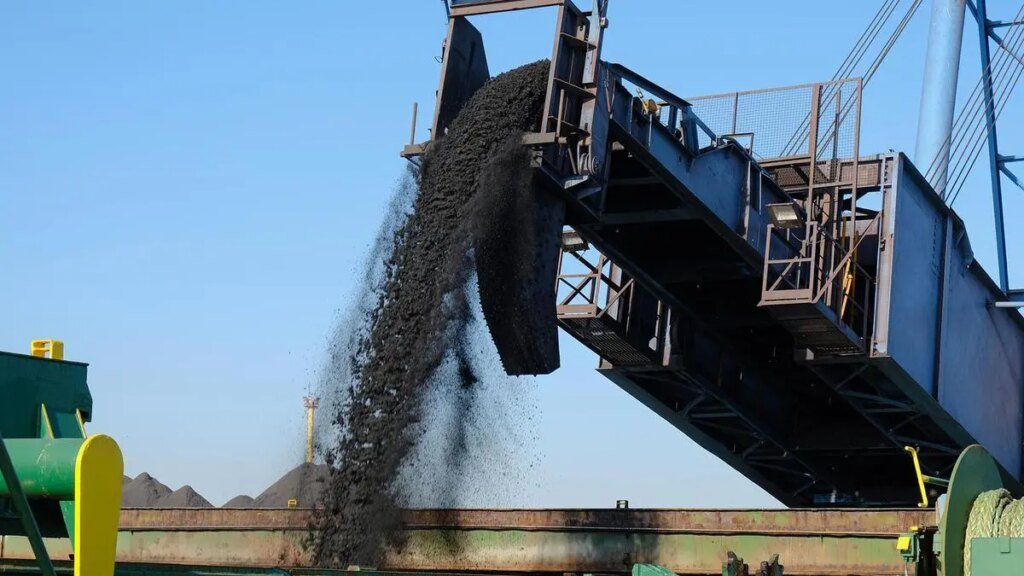India to build critical mineral stockpiles, expand KABIL’s hunt beyond Argentina as part of security drive: G K Reddy
India is stepping up its critical minerals strategy to reduce reliance on a few countries amid global supply chain shifts, G Kishan Reddy, Union Minister for Mines, said. Through the National Critical Minerals Mission (NCMM), the government is pursuing a mix of domestic exploration, overseas acquisitions and recycling initiatives. State-owned entities like KABIL are scouting lithium and cobalt assets abroad, including in Argentina and Zambia.
According to him, parallel efforts include rare earth processing plants, bilateral pacts with resource-rich nations, and a proposed stockpile programme.
With reforms under the MMDR Act – with passage of changes bieng cleared in the just concluded monsoon session of the Parliament, Reddy in an interview to businessline talks about India’s aims to build secure value chains for minerals vital to energy transition.
With global supply chains tightening due to US-China competition, how is India insulating itself from over-dependence for critical minerals like lithium, cobalt and rare earths?
India is acutely conscious of the strategic vulnerabilities that arise from over dependence on a limited number of countries for critical minerals such as lithium, cobalt and rare earth elements. To address this, the Government has adopted a multi-pronged approach.
The Union Cabinet in January approved the setting up of NCMM to secure a long-term sustainable supply and strengthen the country’s critical mineral value chains encompassing all stages, from mineral exploration and mining to beneficiation, processing and recovery from end-of-life products.
The NCMM targets securing the critical mineral value chain such as increasing domestic production, acquisition of critical mineral assets in other resource rich countries as well as recycling the end-of-life products.
On the domestic front, the Geological Survey of India (GSI) has undertaken 195 mineral exploration projects for various critical minerals in the FY-25 and FY-30 projects during FY 2025-26. In order to enhance domestic production of critical and strategic minerals, Centre has auctioned 34 blocks for critical and strategic minerals during FY25 and the current fiscal. To encourage private participation in exploration, we (Mines Ministry) have notified 33 private exploration agencies for taking up exploration projects through funding from National Mineral Exploration Trust (NMET).
And international collaborations?
India is also enhancing its international collaborations. The Ministry maintains regular coordination with Indian embassies to identify potential opportunities in the select countries. We have entered into bilateral MoUs with Australia, Argentina, Zambia, Peru, Zimbabwe, Mozambique, Malawi, etc; and also with international organisations such as the International Energy Agency (IEA).
State-run Khanij Bidesh India Ltd (KABIL) has signed an Exploration and Development Agreement with CAMYEN, a state-owned enterprise of Catamarca province of Argentina, for exploration and mining of five lithium brine blocks in Argentina in an area of 15,703 hectares. Another PSU of the Ministry i.e. MECL has also signed a MoU with Catamarca Province of Argentina for identification and execution of mineral exploration projects.
The Ministry of Mines is also engaged in various multilateral and bilateral platforms such as Minerals Security Partnership (MSP), India-US Strategic Mineral Recovery Initiative (SMRI), the Indo-Pacific Economic Framework (IPEF) and UK-India Technology Security Initiative (TSI) etc. for strengthening the critical minerals value chain.
Recently an Indian project has been included in the Minerals Security Partnership (MSP) project list. Technical Assistance (TA) grant from World Bank ($2 million), Asian Development Bank ($1 million) for supporting the activities of NCMM has been approved by Department of Economic Affairs.
The Ministry is also coming up with a scheme for incentivising the recycling activities under NCMM.
The government recently unveiled the list of 30 critical minerals. Beyond exploration announcements, what concrete steps are being taken to secure long-term offtake agreements?
The Mines and Minerals (Development and Regulation) Act, 1957 (MMDR) has been amended through the MMDR Amendment Act, 2023 w.e.f 17.08.2023. Through this amendment a list of 24 critical and strategic minerals has been created in part D of Schedule-I of the MMDR Act.
Under the NCMM, to encourage the participation of public (Central & State) and private sectors in the acquisition of assets abroad, the Government has plans to incentivise mining and setting up evacuation infrastructure.
Post Argentina, what is the most visible acquisition strategy; and by when?
Following the acquisition in Argentina, KABIL is actively pursuing opportunities in other resource-rich countries. Due diligence is on in a number of countries including Australia.
The KABIL has joined hands with PSUs and international companies to explore opportunities in other geographies. Zambia has offered approximately 9,000 sq km of area for geological mapping (for copper and cobalt). A team of Geoscientist from GSI and MECL has done reconnaissance survey in June 2025.
India has reserves of rare earths but remains dependent on China for processing. What’s the roadmap for building domestic processing and refining capabilities?
While India possesses rare earth reserves of around 7.2 million tons in the form of rare earth oxides (considering 55 per cent REO), it is not dependent on China for processing. We are actively implementing a multifaceted strategy to achieve self-sufficiency in the rare earth elements (REE) market.
Firstly, the IREL has integrated mining and mineral separation plants for extraction of Rare Earth Mineral located in the states of Kerala, Tamil Nadu and Odisha.
Extraction of rare earths from rare earth minerals is carried out in OSCOM (Orissa Sands Complex), Odisha, and a refining unit has been established at Alwaye in Kerala for the production of separated high pure rare earths. Plans are afoot to enhance production of rare earths by way of operationalisation of new mining leases for which LoI (Letter of Intent) has been obtained.
The IREL has established Rare Earth Permanent Magnet Plant at Visakhapatnam to produce Samarium based magnets using indigenous source material for use in defence, space and DAE (Department of Atomic Energy). Similarly, a rare earth and titanium theme park is established at Bhopal for production of rare earth metals like Lanthanum, Cerium and Neodymium and with the objective of demonstrating the operations to entrepreneurs so as to encourage them to set up commercial operations and develop skilled workforce for the future.
With regard to supply chain resilience, India is focusing on trade agreements to secure alternative sources of rare earth minerals and related technologies.
The GoI is engaged in dialogue with different countries like Oman, Vietnam, Sri Lanka, Myanmar through government agencies that include Ministry of Mines (MoM), MEA and NSCS for securing long term supply chains for these minerals.
Here, the Mines Ministry has auctioned Nawatola-Laband REE Block located in Uttar Pradesh. Additionally, two blocks are also auctioned in which REE are associated with other minerals- Katghora Lithium Block in Chhattisgarh, Dombarahalli Phosphate Block.
Recently, Offshore Areas Atomic Operating Rights Rules have been notified by this Ministry. The DAE may consider allocating offshore areas’ BSM blocks to other PSUs/ government organisations for mining and processing.
Frequent amendments to the MMDR Act have been made to attract private investment. Are you satisfied with investor response so far?
The Centre had introduced exploration licence for deep-seated and critical minerals in 2023. The reform is envisaged to encourage investment and to attract junior mining companies in exploration of deep-seated minerals. We have launched the NIT for auction of 13 blocks for grant of exploration licence on 13.03.2025. The auction process is yet to be concluded.
How fast can implementation of proposed changes happen – like a mineral trading exchange like LME or that NMET funds be used for overseas acquisitions?
The MMDR Amendment Bill, 2025 has just been passed by the Parliament. The Government will now frame the necessary rules for these reforms. Ministry of Coal has done advance preparation and will prepare the rules and take appropriate steps to set up coal exchange.
The National Critical Mineral Mission is projected as a game-changer. Can you share specific targets, for the next five years?
The Mission has a running time between FY25 to FY31 where we intend to have 1,200 critical mineral exploration projects; 50 foreign critical mineral mines; an incentive scheme for recycling for nearly 400 kt of minerals; 1,000 patents in the critical mineral value chain; skill development – around 10,000 personnel; four mineral processing parks; three centres of excellence; and five mineral stockpiles. The Ministry of Mines has recognised seven institutes – four IITs and three R&D Labs – as Centres of Excellence (CoE) under NCMM. The formulation of policies/guidelines on the remaining key heads are presently under process.
Given rising geopolitical risks, will India consider building a national reserve of key critical minerals—similar to crude oil strategic reserves?
Under NCMM, a joint initiative of central PSUs or private companies shall be institutionalised to develop a National Critical Mineral Stockpile Programme – for stockpiling critical and strategic mineral – to guard against supply disruptions and aid mineral supply for domestic utilisation. To develop such stockpile or reserves, the government will allocate ₹500 crore during the Mission period for this purpose. The formulation of guidelines for the programme is progressing.



